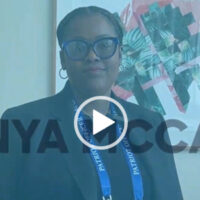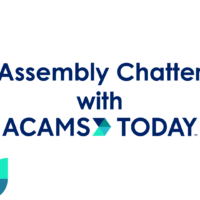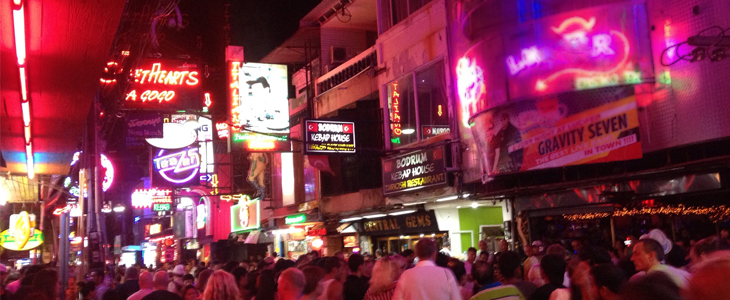
ACAMS Today caught up with Sande Bayer, vice president of the middle office within the wealth management and investment services division at U.S. Bank, to discuss her anti-human trafficking (HT) preventive efforts and her recent trip to Thailand. As vice president, Bayer manages the onboarding and reviews of elevated and high-risk clients, ongoing sanctions clearing and special case investigations. She has over 25 years of experience in the financial industry including insurance, brokerage products and the banking industry. Her roles and responsibilities have included management, training and compliance oversight. Her most recent engagement is with enterprise and business line projects to meet heightened know your customer/customer due diligence requirements. Bayer is a founding member of the ACAMS Greater Twin Cities Chapter and currently serves as co-chair. She has been active with the Minnesota Region Chapter of Not For Sale (NFS), an organization that raises awareness and increases efforts to cease global HT.
ACAMS Today: Every year you go to Thailand to help fight HT, were there any new preventive efforts or rescue and restorative needs you recognized during this trip?
Sande Bayer: Each trip to Thailand has given me new experiences that go deeper into my heart. This last trip did that even more. While in Mae Sot, on the Burma border, we witnessed the repercussions of the political change toward refugees. In the previous month, more than 60,000 people who had called Mae Sot home had fled due to their refugee status and fear of what the new government may dictate. Desperation and fear increases vulnerability. The nongovernmental organizations (NGOs) there were also impacted, since a large segment of their efforts are focused on this population. It reaffirms that efforts to provide stability and basic needs are essential: food, water, health, clothing and a place to call home without the fear of losing any of those are critical.
AT: Can you share some of your success stories in Thailand?
SB: Measuring success on these trips can be challenging. It’s not like other mission trips where you have measurable accomplishments, such as food distribution, building schoolhouses or dorm rooms. There have been times where success on our trips were from talking with the girls while working and getting a smile or a hug and a promise to follow their dreams and to leave the life, or seeing their confidence grow while in the recovery programs as they learn new skills and plan their lives without selling themselves. This last trip though, bore the fruit of previous trips and connections.
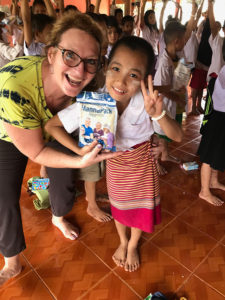
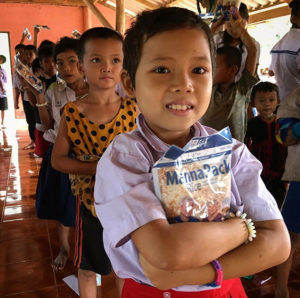
While in Mae Sot, we partnered with Venture and delivered Feed My Starving Children meal packs to two different villages. To see the brutal reality of how these families live without running water, electricity, mattresses or refrigeration is eye-opening. These villages on the border have direct impact with the political unrest in Myanmar. Several people1 shared stories of Burmese soldiers crossing the river and leaving their children at the orphanage in the village while other refugees attempted to flee for safety. As Americans, we don’t experience being refugees to save our lives, or the lack of basic necessities or conveniences. Yet, the children smiled when they saw us, laughed as we played kickball with them and offered to share their food and homes with us. These children and families deserve more options for survival.
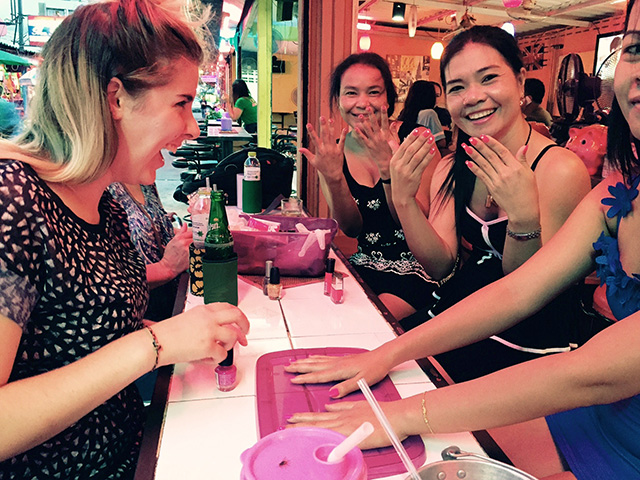
We were in one city for four days. We walked the beaches in the afternoon before the girls would start work and we would offer them free manicures. This gave us a chance just to talk and laugh with them before work and hear their stories. We encouraged them to think about and remember what their dreams are. None of these girls wanted to be in the spot they are in. Their dreams are like ours—they want to be teachers, lawyers, nurses, own a business, fall in love and have a family, but their circumstances changed all of that. One afternoon, we had a party in one of the conference rooms at the hotel where we were staying. We decorated it with balloons and streamers, we had food and games to play, and a photo booth with props. We invited 35 girls to come, but had no idea how many would show up. Twenty-five girls came. These girls had never been in a situation where they weren’t expected to perform or do something in return. At first, several were uncomfortable with just having fun, laughing and receiving unsolicited generosity. Everyone got copies of their silly pictures, small gifts and food as they left. From the connections we made on the beaches and bars, which resulted in that party, we managed to get three girls out of the life and relocated. In addition, six girls were onboarded into the programs and in the process of leaving, four more signed up for English classes and one bar is under investigation for employing underage girls. We continue to stay in touch and get updates, and as of December, all of the girls are still on track with the decisions they made last September.
AT: You work closely with anti-HT nonprofit organizations based in Thailand; what are some of the efforts these organizations have planned to combat HT in 2018?
SB: Education is a primary goal—both within the communities and for the victims themselves. Shame is a large obstacle in the Thai culture. Education is needed for awareness, but also for the victims to gain confidence and to prepare themselves for their next steps. There is a large need for restoration, both physically and emotionally, for the victims. When girls are trafficked internationally, additional steps take place when getting them back home and establishing a strong and continuing support network for them. Support efforts for all of the girls (and boys) rescued is critical to their success. Funds are needed for all of the aspects of these support efforts. We’ve also seen more group homes and programs started for young children who are vulnerable to being trafficked and safe houses for those rescued who will provide witness testimony and court statements. Partnerships with local law enforcement is always a challenge, as is the evolving political atmosphere and refugee status along the borders.
AT: Will you return to Thailand in the near future? Are there other countries on your radar you would like to visit to help combat HT?
SB: I don’t have firm dates for any trips in 2018, but I wouldn’t be surprised if ongoing conversations become solid plans for the fall. I’m also interested in work being done in Nepal against HT. The strong ties to cultural impact draws me in and grabs my interest. I’m very passionate with organizations that focus on empowering communities to make them self-sustainable and less vulnerable to traffickers and handlers. These efforts can include the basic needs: shelter, water, food and education, and progress to agriculture and small business models. I get excited when I hear the stories of new small businesses or programs that draw kids in and off the streets, embrace them and strive to build them up. Those efforts are strengthening everywhere across the globe and it’s exciting to witness.
AT: January is National Slavery and Human Trafficking Prevention Month. Is there anything in particular you will be doing this month to prevent HT or anything you will be doing in the fight against HT?
SB: January is a busy month for us in Minneapolis! Our ACAMS Chapter is hosting a half-day learning event on HT on January 11. We will have industry experts, survivors, resource centers and members of local and federal law enforcement. In addition, Dennis Lormel, former chief of the FBI’s Financial Crimes Program, will discuss the grueling truth about HT and its prevalence around large events such as the Super Bowl. We will also have the executive director of Breaking Free share her perspective and insights as a survivor. Minneapolis is hosting Super Bowl LII in February and our community is experiencing the balance of challenges and excitement as host city. I am volunteering with the Minnesota Super Bowl Host Committee on the training team for 10,000 volunteers. I have been part of this team since last spring working in volunteer recruitment, interviews, orientation and training. The training includes how to recognize signs of HT and how to escalate appropriately. Our trainings are also role specific to hotels, airports, Mall of America, our skyways and the NFL Live experience. Partnership with our state task force, the Women’s Foundation of Minnesota, law enforcement and our survivor programs has been critical to providing a consistent approach.
- Women taking care of the orphanages, service coordinators and people in the village (via translators) shared these stories.








